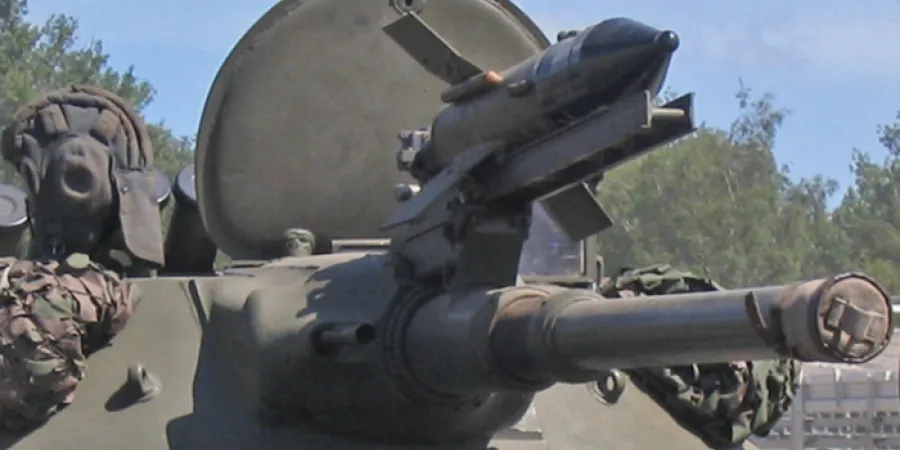The RAAD: An Iranian Anti-Tank Missile in Service of the Islamic Jihad
The missile is manufactured by the Iranian Ministry of Defense and is based on the Soviet 9K11 Malyutka missile (Sagger AT-3b)
Eyal Boguslavsky
| 21/10/2023
The Palestinian Islamic Jihad (PIL) used an Iranian RAAD-T anti-tank missile in an attack on the Gaza Strip on October 7. According to a report on Army Recognition, based on videos published on social networks, the PIL military arm, the Al-Quds Brigades, used a "RAAD" guided anti-tank missile based on the Soviet Sagger missile.
The RAAD-T is an anti-tank missile manufactured by the Iranian Ministry of Defense based on the Soviet 9K11 Malyutka missile known in the West as Sagger AT-3b. Iran's defense industries began designing this missile in 1994 in cooperation with China and North Korea. Production began in 1995 and the missile was officially presented to the public in 1997. Between 1996 and 2004, Iran produced about 2,250 RAAD missiles.
The RAAD-T missile has a range from 400 to 3,000 m, a notable enhancement over the original Russian Malyutka's range of around 2,000 meters. Like its Soviet predecessor, the Raad employs a wire-guided system. This system allows the operator to actively guide the missile towards its target, offering the ability to make adjustments mid-flight.
One of the missile's standout features is its tandem-charge high-explosive anti-tank (HEAT) warhead. This design is particularly effective against modern armored vehicles, especially those equipped with explosive reactive armor. The missile can penetrate 400 mm of armor.
A number of such missiles were seized by the IDF in 2002 on board the "Karine A" ship which was on its way from Iran to the Palestinian Authority. Missiles of this type were also delivered to Hezbollah and were used by the organization in its activities against the IDF in the Second Lebanon War.
The missile is manufactured by the Iranian Ministry of Defense and is based on the Soviet 9K11 Malyutka missile (Sagger AT-3b)
The Palestinian Islamic Jihad (PIL) used an Iranian RAAD-T anti-tank missile in an attack on the Gaza Strip on October 7. According to a report on Army Recognition, based on videos published on social networks, the PIL military arm, the Al-Quds Brigades, used a "RAAD" guided anti-tank missile based on the Soviet Sagger missile.
The RAAD-T is an anti-tank missile manufactured by the Iranian Ministry of Defense based on the Soviet 9K11 Malyutka missile known in the West as Sagger AT-3b. Iran's defense industries began designing this missile in 1994 in cooperation with China and North Korea. Production began in 1995 and the missile was officially presented to the public in 1997. Between 1996 and 2004, Iran produced about 2,250 RAAD missiles.
The RAAD-T missile has a range from 400 to 3,000 m, a notable enhancement over the original Russian Malyutka's range of around 2,000 meters. Like its Soviet predecessor, the Raad employs a wire-guided system. This system allows the operator to actively guide the missile towards its target, offering the ability to make adjustments mid-flight.
One of the missile's standout features is its tandem-charge high-explosive anti-tank (HEAT) warhead. This design is particularly effective against modern armored vehicles, especially those equipped with explosive reactive armor. The missile can penetrate 400 mm of armor.
A number of such missiles were seized by the IDF in 2002 on board the "Karine A" ship which was on its way from Iran to the Palestinian Authority. Missiles of this type were also delivered to Hezbollah and were used by the organization in its activities against the IDF in the Second Lebanon War.



